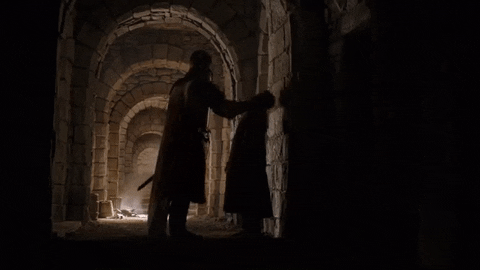(Every word of this post is a spoiler.) There was never really any doubt surrounding what would happen to Jon Snow after he was stabbed over and over and over again: He would die and then he would be resurrected. Which is exactly what happened. But Snow’s resurrection was so certain, so long predicted, that it may have obscured a more interesting question: What happens to Snow now? The resurrections we have seen so far suggest that resurrection may be more costly than many expect. Similarly, if you recall the revulsion that has customarily followed Melisandre’s magic, Snow may also have something of a legitimacy problem—he wasn’t exactly the most popular guy at Castle Black before he was Azor Ahzombie.
Snow’s resurrection felt oddly anticlimactic. It was partly because everyone knew it was coming, but also because of the sheer brutality that preceded it. Games of Thrones’s showrunners D.B. Weiss and Dan Benioff have many gifts, but their greatest may be their ruthless efficiency. Last season, they paid tribute to Martin’s books by getting bogged down in the Known World, but this season they’ve struck back with a vengeance. The deaths of Roose Bolton and his wife and baby heir were inevitable, but as with Dorne, there was something shocking about how quickly Benioff and Weiss cut to the chase.
That, I think, is the beauty and the trouble of the first two episodes of this season. Benioff and Weiss are ready to kick things into high gear and start sprinting towards the endgame. But there are a lot of barriers in the way, which make all these deaths—Doran and Trystane Martell, Roose Bolton, Balon Greyjoy—seem oddly pro forma. They’re plot points to make other plot points possible, deaths to pay for life.
